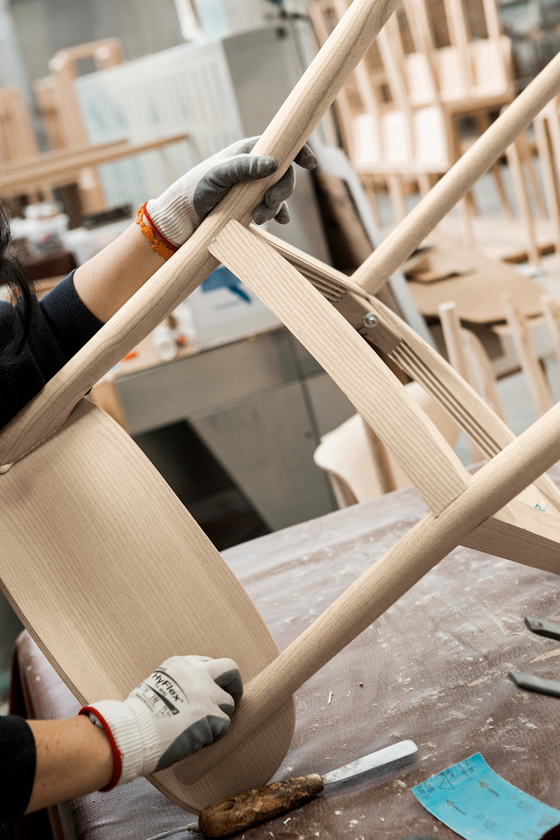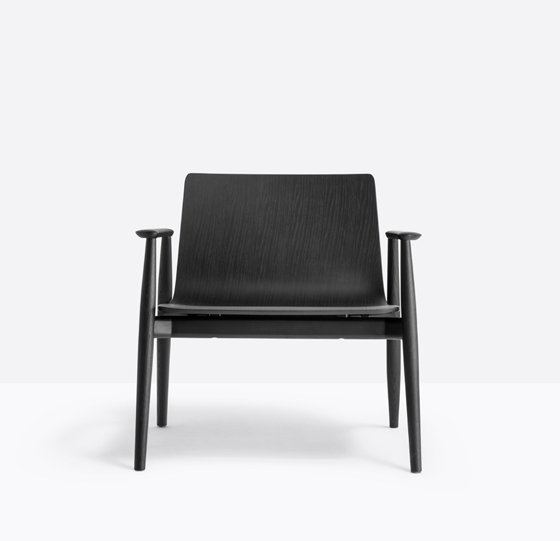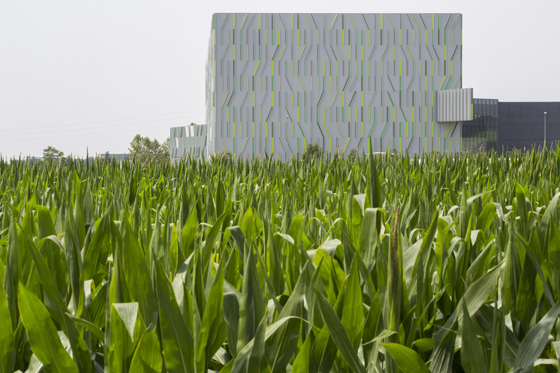50 Shades of Green: Pedrali
Brand story by Simon Keane-Cowell
MORNICO AL SERIO (BG), Italy
22.03.18
Pedrali’s new water-based, plant-derived paints mark another milestone in the Italian furniture manufacturer’s delivery of its clear and robust sustainability strategy.
2018 sees the anniversary of the Compasso d'Oro-winning Frida chair from Pedrali, whose innovative design features a filigree, three-dimensionally curved, plywood shell. Now available in the brand's new range of plant-based bio-paints

2018 sees the anniversary of the Compasso d'Oro-winning Frida chair from Pedrali, whose innovative design features a filigree, three-dimensionally curved, plywood shell. Now available in the brand's new range of plant-based bio-paints
דAny colour as long as it’s black” goes the infamous Henry Ford quote. Speaking of his pioneering Model T automobile, perhaps with his tongue somewhat in his cheek, the godfather of rationalised industrial production was always keen to champion the merits of standardisation.
Equally pioneering furniture and lighting manufacturer Pedrali could be said to offer its products in any colour as long as it’s green. Not literally, you understand. But such is the company’s commitment to environmental sustainability throughout the manufacturing process, the metaphor is an apt one. Unlike some brands who pay mere marketing lip-service to the must-be-seen-as-eco-friendly imperative, Pedrali has consistently invested significant time and money over a number of years in developing its green credentials.
Pedrali’s wood-furniture collection – produced at their dedicated wood-production factory in Manzano, Udine – receives an eco-upgrade via the company's new range of plant-derived paints
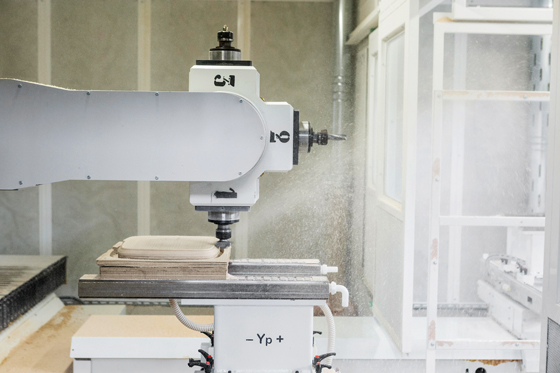
Pedrali’s wood-furniture collection – produced at their dedicated wood-production factory in Manzano, Udine – receives an eco-upgrade via the company's new range of plant-derived paints
×Nose to tail
The brand was one of the first chair manufacturers in Italy to use water-based finishes for its furniture, for example, as well as installing LED lighting throughout its offices and production plants. No surprise, then, to learn that Pedrali is fully ISO-14001-certified – meaning it operates a demonstrable environmental-management system across the board. All of its production processes are certified, with every department called upon to present a budget annually to reduce energy usage.
“The issue of environmental sustainability is becoming increasingly important in the architecture and industrial design sector,” says Monica Pedrali, the brand’s sales and marketing chief. “And it’s the responsibility of the entrepreneurial company to take charge of this. Designers are increasingly sensitive to this theme, making environmental sustainability one of the main requirements of their products.”
In the line of fire: authored over the past few years by Pedrali design stablemate Cazzaniga Mandelli Pagliarulo, the Malmö, Nym and Nemea chairs (top, middle and bottom respectively) go green – if not literally
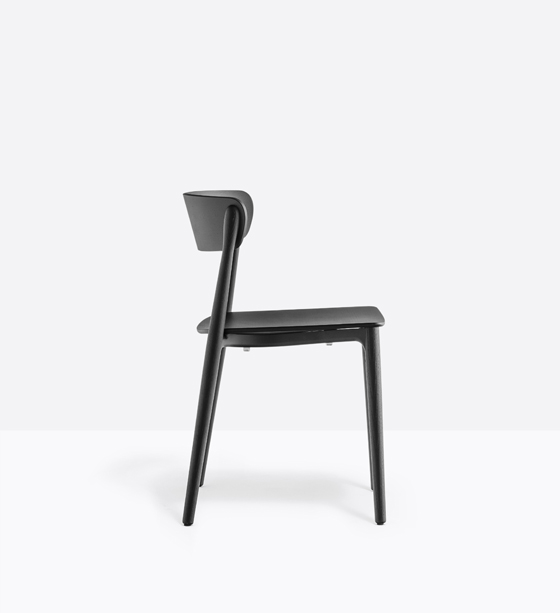
In the line of fire: authored over the past few years by Pedrali design stablemate Cazzaniga Mandelli Pagliarulo, the Malmö, Nym and Nemea chairs (top, middle and bottom respectively) go green – if not literally
×New water-based paints
Pedrali’s green assets have just got a shade greener, however. The brand has seized on a new bio-innovation in the paint industry and made the switch to high-quality, water-based paints, made for the most part from plant-derived resins. Easy on the environment, they’re just as tough as their petroleum-based counterparts, offering durability, light and chemical resistance, and superior industrial usability.
The new cohort of paints – made from renewable materials sourced from refining processes of waste plant substances – are also proven to deliver a dramatic reduction in VOC, or Volatile Organic Compounds. These are the chemicals that, over time, leach out of traditional paints, posing a significant health risk to, as well as contributing to, air pollution.
“The result is a less hazardous working environment,” explains Monica Pedrali, “since these paints are non-flammable and there’s less air pollution. There’s also major energy savings in their production, leading to a reduction in CO2 emissions. End-consumers benefit, of course, but also our company’s employees, who can work in healthier conditions.”
Architecture as brand rhetoric: Pedrali's state-of-the-art logistics facility in Bergamo wears a green skin designed by Cino Zucchi Architects, signifying the company's strategic, long-term commitment to environmental sustainability

Architecture as brand rhetoric: Pedrali's state-of-the-art logistics facility in Bergamo wears a green skin designed by Cino Zucchi Architects, signifying the company's strategic, long-term commitment to environmental sustainability
×Sitting in green
It’s ten years since Pedrali first presented the Compasso d’Oro-winning Frida chair, created by Milan-based industrial designer Odo Fioravanti. What better time then to underscore its innovative concept – the piece consists of an ultra-slim, 3-millimetre, curved plywood body mounted on a optically and literally light, geometrically intriguing oak frame – by offering the product in the brand’s new range of innovative bio-paints?
A number of other chair designs from Pedrali’s wood-furniture collection – all produced at their dedicated wood-production factory in Manzano, Udine – have also received an eco-upgrade via the new range of plant-based paints: including Nym (a contemporary take on the classic English Windsor chair type, in sold ash), Nemea (where classical form meets contemporary detailing and finish), and Malmö (whose reduced form is counterbalanced by its warm materiality).
Sales and marketing chief Monica Pedrali: “There’s a major energy savings in the production of these paints, leading to a reduction in CO2 emissions. End-consumers benefit, but also our company’s employees, who can work in healthier conditions"
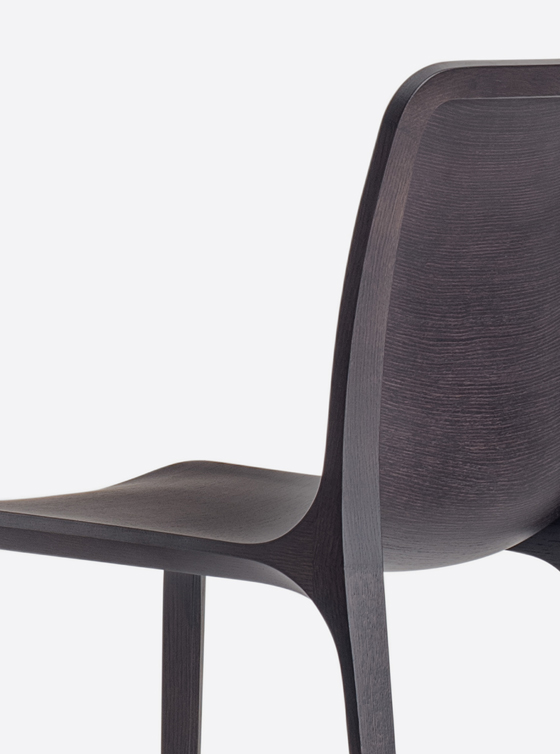
Sales and marketing chief Monica Pedrali: “There’s a major energy savings in the production of these paints, leading to a reduction in CO2 emissions. End-consumers benefit, but also our company’s employees, who can work in healthier conditions"
×All three pieces were authored over the past few years by design trio Cazzaniga Mandelli Pagliarulo, just one of Pedrali’s longer-term stablemates. The company’s commitment to sustainability extends, it would appear, to its collaborative partnerships as much as anything else.
They often say self-praise is no praise. But sometimes, particularly in the commercial world, there’s no harm in placing your USPs front and centre. With Pedrali one of the few furniture brands that’s actively pursuing a sustainability strategy in a joined up and meaningful way, they want to talk about it. And why not? So when it came to the beautifully textural facade of their cathedral-like, 85,000-square-metre, state-of-the-art logistics facility in Bergamo – which opened in late 2016 and whose skin was designed by Cino Zucchi Architects – guess which colour they opted for?
Hint: it wasn’t black.
© Architonic




